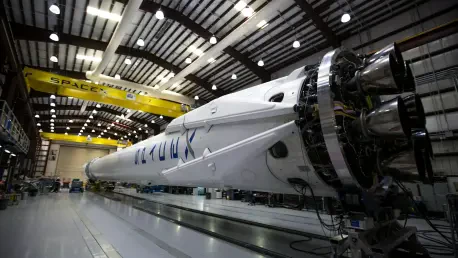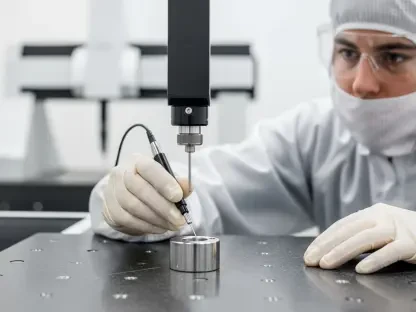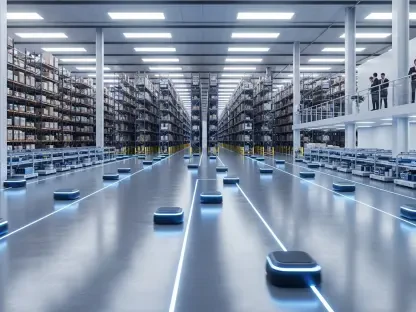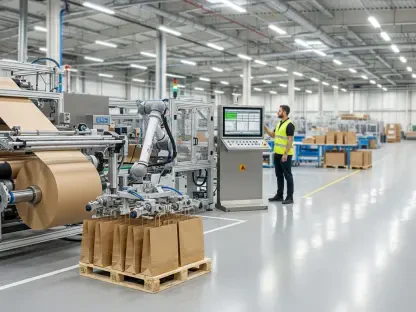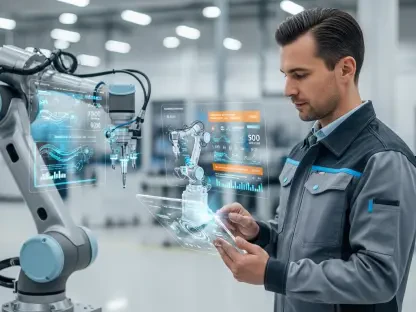What if the secret to conquering the vastness of space lay in something as fundamental as combining two metals? Picture a spacecraft enduring the searing heat of rocket propulsion while remaining light enough to maneuver with precision. This isn’t science fiction—it’s the reality crafted by Space Machines Company (SMC), an Australian innovator based in Botany. Their newly unveiled bi-metal rocket thruster, a fusion of cutting-edge materials and manufacturing, is poised to transform how humanity explores the cosmos, starting with their Optimus Viper spacecraft.
Why This Breakthrough Matters in the Space Race
Amid a global surge in space exploration, from lunar missions to asteroid mining, the pressure on propulsion technology has never been greater. Traditional rocket thrusters, often built from a single metal, grapple with trade-offs between durability, weight, and thermal resistance, resulting in frequent failures and skyrocketing costs. SMC’s bi-metal thruster addresses these pain points head-on, offering a solution that could redefine efficiency and reliability for spacecraft tasked with on-orbit servicing and beyond. This innovation signals a pivotal moment, not just for aerospace but for industries hungry for advanced manufacturing answers.
The significance extends beyond technical specs. With space becoming a contested domain for both commercial and national interests, having robust, cost-effective technology is a strategic advantage. SMC’s development, supported by Australia’s iLAuNCH Trailblazer program, positions the country as a serious player in the global space arena. This isn’t merely about building better rockets—it’s about staking a claim in the future of exploration and security.
The Science Behind the Bi-Metal Marvel
At the heart of SMC’s thruster lies a revolutionary approach to material integration. Using multi-material Additive Manufacturing (AM), the design pairs high-strength steel for structural stability with a copper alloy for unmatched heat conductivity. Crafted at CSIRO’s Lab22 with Nikon SLM Solutions’ state-of-the-art machinery, this dual-metal setup endures extreme temperatures and pressures while keeping weight minimal—a game-changer compared to conventional single-metal systems.
Unlike older methods that rely on labor-intensive machining and brazing, often leading to defects, SMC’s AM process builds both materials at once. This slashes production time and costs while enabling complex features like regenerative cooling channels within the copper alloy, crucial for managing heat during prolonged operations. Integrated into the Scintilla propulsion system, the thruster supports extended burns and intricate maneuvers, essential for tasks like space logistics and inspections.
The ripple effects are vast. Beyond aerospace, this technology could reshape sectors like automotive and biomedicine, where multi-material components promise enhanced performance. Imagine car engines with better heat dissipation or medical implants tailored for strength and biocompatibility—SMC’s innovation hints at a manufacturing revolution waiting to unfold.
Voices from the Vanguard of Innovation
Leaders behind this project paint a vivid picture of its potential. SMC CEO Rajat Kulshrestha emphasized the thruster’s role in scalability, stating, “This approach allows rapid testing of material pairings, ensuring our Optimus Viper fleet is equipped for relentless operations and heightened space awareness.” His words highlight a focus on agility and adaptability in spacecraft design.
Darin Lovett, Executive Director of iLAuNCH, pointed to the broader impact, saying, “This initiative strengthens Australia’s sovereign space capabilities, showcasing technology that competes on a world stage.” Meanwhile, CSIRO Senior Research Scientist Dr. Cherry Chen shed light on the precision of AM: “Placing materials exactly where they’re needed cuts waste and boosts efficiency.” Together, these perspectives weave a narrative of technical prowess, national pride, and forward-thinking strategy, underlining the collaborative spirit driving this leap forward.
Practical Steps for Harnessing This Technology
For engineers and companies eager to tap into this advancement, SMC’s model offers actionable insights. Start by exploring multi-material AM for parts needing diverse traits, such as combining toughness with thermal management, through partnerships with cutting-edge facilities like CSIRO’s Lab22. This approach can unlock solutions for challenges previously deemed insurmountable.
Next, prioritize design innovation—AM enables geometries impossible with traditional methods, like internal cooling pathways. Additionally, focus on scalability; the ability to prototype and adjust quickly, as SMC has shown, is invaluable for iterative development in aerospace. Finally, think cross-industry—evaluate how dual-material techniques might address needs in fields like toolmaking or heat exchanger production, opening doors to unforeseen efficiencies.
Reflecting on a Milestone with Eyes on Tomorrow
Looking back, SMC’s unveiling of the bi-metal rocket thruster stood as a defining moment in aerospace engineering. The seamless blend of steel and copper alloy through multi-material Additive Manufacturing delivered a lightweight, durable solution for the Optimus Viper spacecraft, backed by iLAuNCH and CSIRO’s expertise. This achievement tackled longstanding hurdles in propulsion technology with elegance and precision.
As industries digest this breakthrough, the next steps become clear. Stakeholders need to invest in AM research and infrastructure to scale such innovations, while policymakers must foster environments where cross-sector collaboration thrives. The journey ahead promises not just better spacecraft, but a reimagined approach to manufacturing that could elevate global standards. Australia, through SMC, has ignited a spark—now it’s time to fan the flames.
